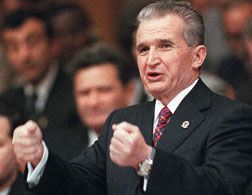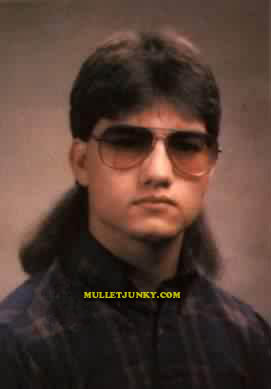
The development of a drug that controls a chemical used to form memories sparked heady scientific and philosophical speculation this week.
Granted, the drug has only been tested in rats, but other memory-blunting drugs are being tried in soldiers with post-traumatic stress disorder. It might not be long before memories are pharmaceutically targeted, just as moods are now.
Some think this represents an opportunity to eliminate the crippling psychic effects of past trauma. Others see an ill-advised chemical intrusion into an essential human facility that threatens to replace our ability to understand and cope with life's inevitabilities.
Oxford University neuroethicist Anders Sandberg spoke with Wired.com about the future of memory-editing drugs. In some ways, said Sandberg, our memories are already being altered. We just don't realize it.
Wired.com: Will these drugs, when they become available, work as expected?
Anders Sandberg: A lot of discussion is based on the false premise that they'll work as well as they would in a science fiction story. In practice, well-studied, well-understood drugs like aspirin have side effects that can be annoying or even dangerous. I think the same thing will go for memory editing.
Wired.com: How selective will memory editing be?
Sandberg: Current research seems to suggest that it can be pretty specific, but there will be side effects. It may not even be that you forget other memories. Small, false memories could be created. And we're probably not going to be able to predict that before we actually try them.
Wired.com: What's the right way to test the drugs?
Sandberg: The cautious approach works. Right now, there are small clinical trials using propranolol to reduce post-traumatic stress disorder, which is a good start. We should also find better ways of doing the trials, because we don't really know what we're looking for.
When testing a cancer drug, we look at side effects in terms of toxicity. Here we might want to look at all aspects of thinking, which is really hard, because you can't test for all of them.
In the future, since we're getting more technological forms of recording and documenting our lives, those will have a bigger part in testing the drugs. We'll be able to ask, How does this help in everyday life? How often do you get "tip of the tongue" phenomena? Does it increase in relation to the drug?
Wired.com:
It seems that it would be easy to test "tip of the tongue" drug effects on the sorts of small things one recalls on an everyday basis. But what if it's old, infrequently recalled but still-important memories that are threatened by side effects?
Sandberg: It's pretty messy to determine what is an important memory to us. They quite often crop up, but without us consciously realizing that we're thinking of the memory. That's probably good news, as every time you recall a memory, you also tend to strengthen it.
Wired.com: How likely is the manipulation of these fundamental memories?
Sandberg: Big memories, with lots of connections to other things we've done, will probably be messy to deal with. But I don't think those are the memories that people want to give up. Most people would want to edit memories that impair them.
Of course, if we want to tweak memories to look better to ourselves, we might get a weird concept of self.
Wired.com: I've asked about memory removal — but should the discussion involve adding memories, too?
Sandberg: People are more worried about deletion. We have a preoccupation with amnesia, and are more fearful of losing something than adding falsehoods.
The problem is that it's the falsehoods that really mess you up. If you don't know something, you can look it up, remedy your lack of information. But if you believe something falsely, that might make you act much more erroneously.
You can imagine someone modifying their memories of war to make them look less cowardly and more brave. Now they'll think they're a brave person. At that point, you end up with the interesting question of whether, in a crisis situation, they would now be brave.
Wired.com: You use another example of memory-editing drugs for soldiers in your article with S. Matthew Liao, that if the memory of a mistaken action is erased, a soldier might not learn from his remorse.
Sandberg: To some extent, we already have to deal with this. My grandfather's story of having been in the Finnish winter war as a volunteer shifted over time. He didn't become much braver from year to year, but there was a difference between the earlier and later versions.
We can't trust our memories. But on the other hand, our memories are the basis for most of our decisions. We take it as a given that we can trust them, which is problematic.
Wired.com: But this fluidity of memory at least exists in an organic framework. Might we lose something in the transition to an abrupt, directed fluidity?
Sandberg: There's some truth to that. We have authentic fake memories, in a sense. My grandfather might have made his memories a bit more brave over time, but that was affected by his personality and his other circumstances, and tied to who he was. If he just went to the memory clinic and wanted to have won the battle, that would be more jarring.
If you do that kind of jarring change, and it doesn't connect to anything else in the personality, it's probably not going to work that well.
Wired.com: In your article, you also bring up forgiveness. If we no longer remember when someone has wronged us, we might not learn to forgive them, and that's an important social ability.
Sandberg: My co-author is more concerned than I am, but I do think there's something interesting going on with forgiveness. It's psychological, emotional and moral — a complex can of worms.
I can see problems, not from a moral standpoint, but legal. What if I hit you with my car, and to prevent PTSD you take propranolol, and afterwards in court think it wasn't too serious? A clever lawyer might argue that the victim's lack of concern means the crime should be disregarded.
I'm convinced that we're going to see a lot of interesting legal cases in the next few years, as neuroscience gets involved. People tend to believe witnesses. Suppose a witness says, "I'd just been taking my Ritalin" — should we believe him more, because we've got an enhanced memory? And if a witness has been taking a drug to impair memory, is that a reason to believe that her account is not true?
With this kind of neuroscientific evidence, it's very early to tell what we can trust. We need to do actual experiments and see measure how drugs enhance or impair memory, or more problematically, introduce a bias. Some drugs might enhance emotional memories over unemotional, or vice versa.
Wired.com: Is it paranoid to worry that someday people will be stuck drifting in a sea of shifting and unreliable memories?
Sandberg: I think we're already in this sea, but we don't notice it most of the time. Most people think, "I've got a slightly bad memory." Then they completely trust what they remember, even when it's completely unreliable.
Maybe all this is good, because it forces us to recognize that the nature of our memory is quite changeable.

































